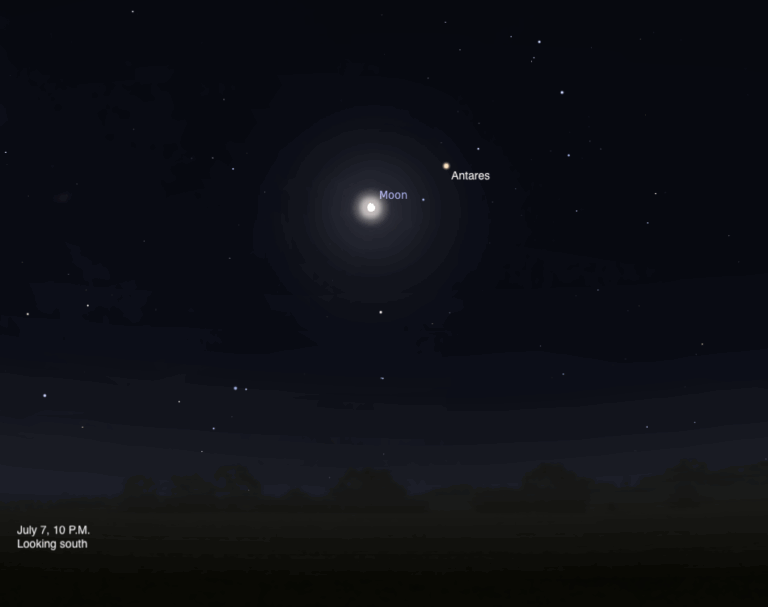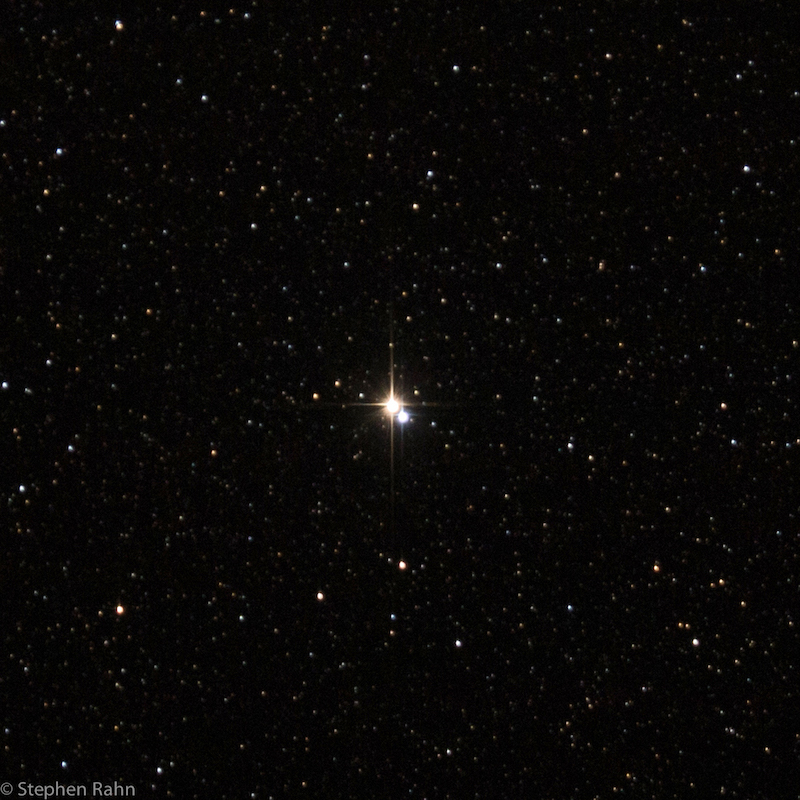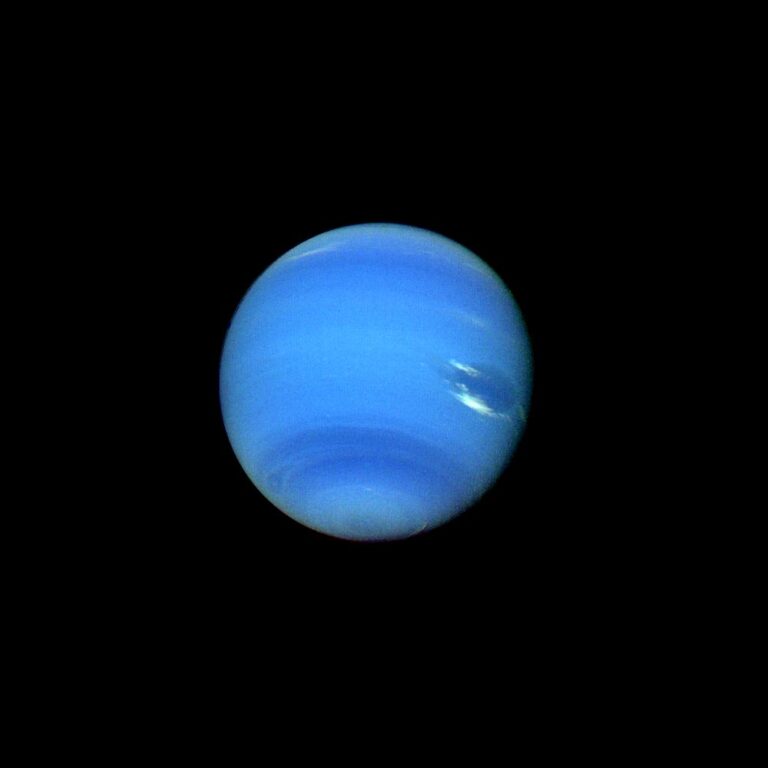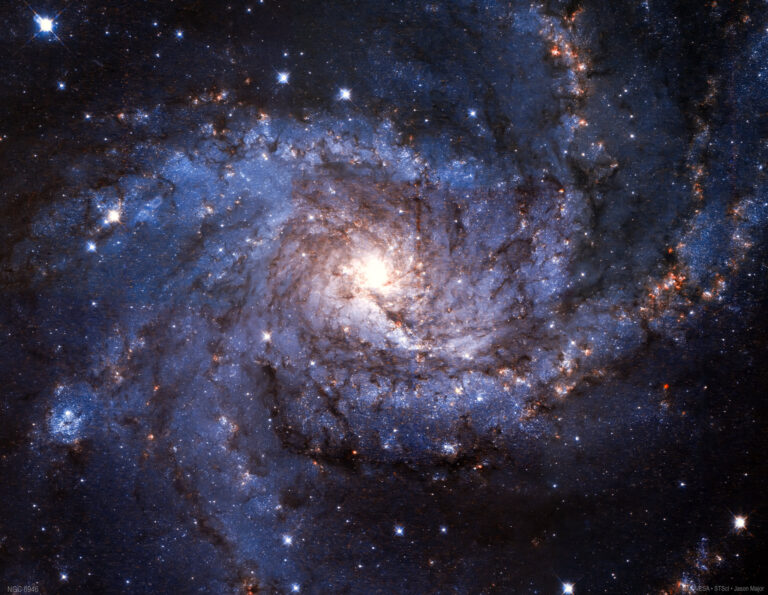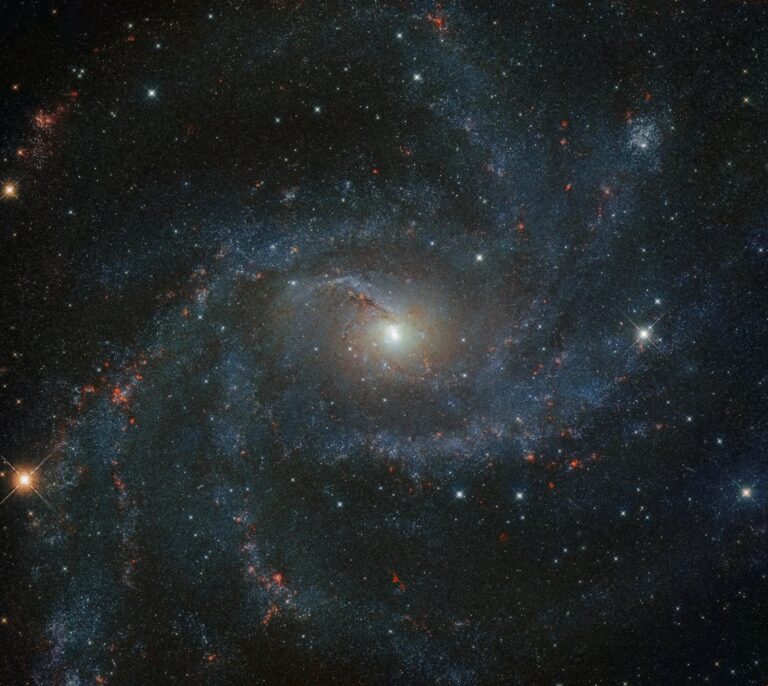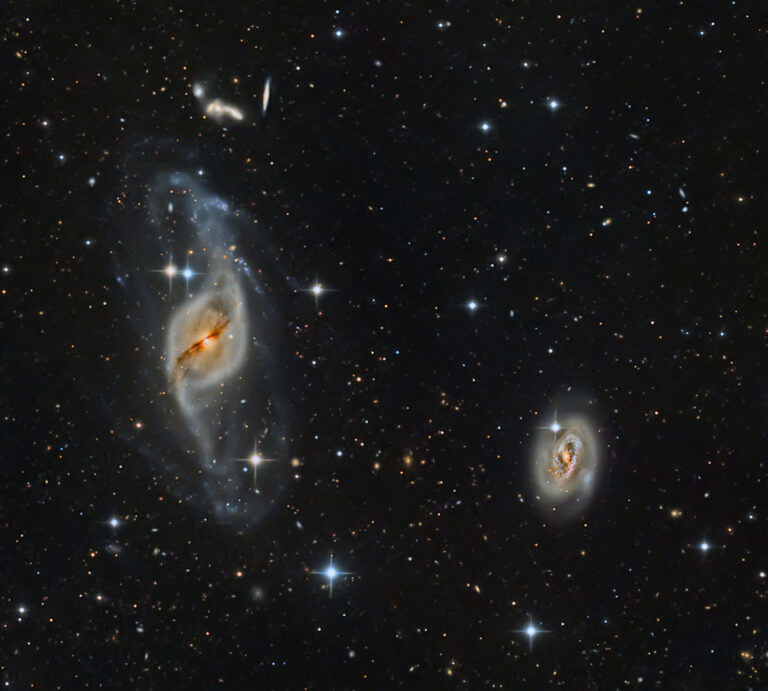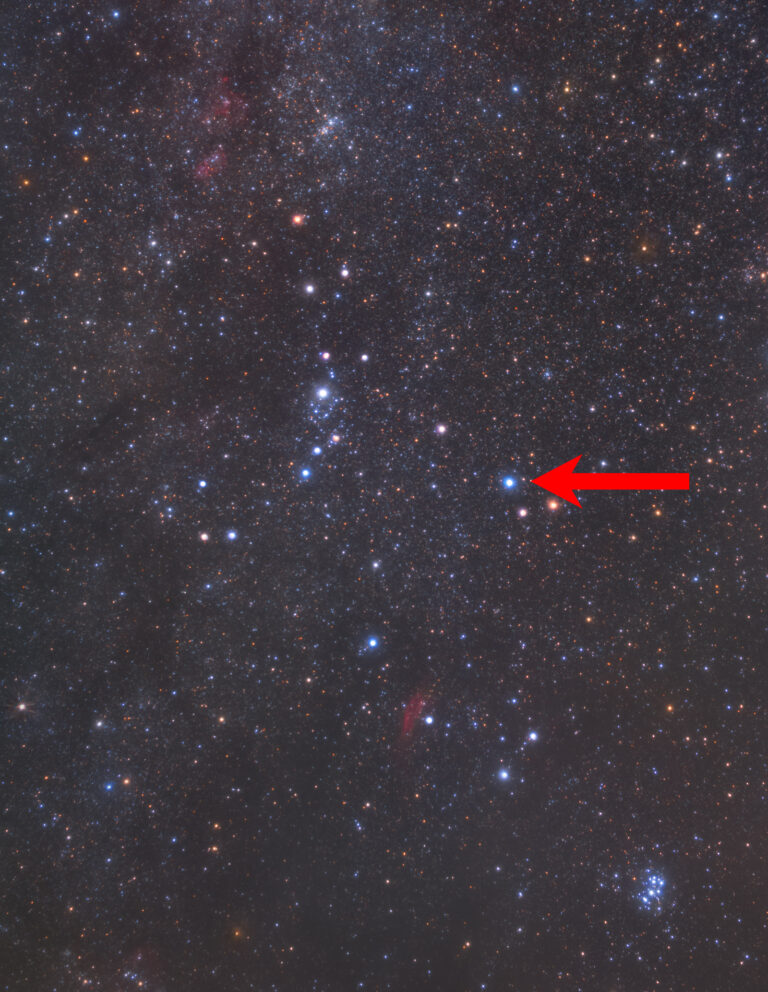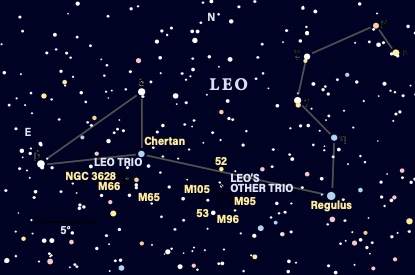
Key Takeaways:
Leo the Lion is one of the oldest constellations, with origins dating back to the Mesopotamians. It is also one of the most distinctive constellations in the night sky. Brilliant Regulus, marking Leo’s heart, first calls our attention. The Lion’s regal silhouette is created from an asterism forming a question mark or sickle, which marks its head. The rest of the seated body extends eastward toward its triangular hindquarters and tail.
Leo sits in an area rich in distant galaxies. Most are too faint to be visible through binoculars, but a few are bright enough to tempt us to give them a go. We visited three that lie in the same field of view — M65, M66, and NGC 3628 — in this column back in April 2018. Collectively, those are nicknamed the Leo Triplet or Leo Trio. This month, we are back to ferret out three other close-set galaxies, which I call Leo’s Other Trio.
These galaxies — M95, M96, and M105 — are believed to be about 35 million light-years away, according to NASA scientists. That’s about 2 million light-years farther than the original Leo Trio.
Both M95 and M96 were discovered by Pierre Méchain on March 20, 1781. Charles Messier confirmed them four nights later, describing M95 as a “nebula without star,” adding, “Its light is very faint.” As for M96, he also saw it as a “nebula without star” and indicated, “This one is less distinct.”
Although M105 is only ¾° north of M96, Méchain didn’t bump into it until March 24, 1781. While M95 and M96 were added to the Messier catalog quickly, M105 was not. Some believe that Messier may not have had enough time to corroborate Méchain’s discovery before his catalog went to press. It wasn’t added until 1947, after U.S.-born Canadian astronomer Helen Sawyer Hogg uncovered a letter written by Méchain describing the galaxy.
Like the original Leo Triplet, M95, M96, and M105 are easy to locate: Aim about halfway along the Lion’s belly between Regulus (Alpha [α] Leonis) and Chertan (Theta [θ] Leonis). There, you’ll find 5th-magnitude 52 Leonis. Place it near the top of the field and another 5th-magnitude star, 53 Leonis, will pop into the bottom. Hold those stars in place and the three galaxies are centered in the field — even though you may not realize it at first.
That’s because while they are easy to locate, they are not easy to see; all three challenge binoculars even with a sky that is both clear and dark. But with perseverance and a little strategy, I have spotted them through my 10×50 binoculars. And if I can see them, so can you.
First try your luck with M96, which shines at magnitude 9.2. Although Messier thought it was fainter than M95, it strikes me and others as slightly brighter. From my suburban backyard, my tripod-mounted 10×50 binoculars show a small, slightly oval glow that brightens toward the center. Switching to my 16x70s increases its visibility but adds little detail. Photographs reveal a tightly wound type Sa spiral galaxy that is seen almost face-on from our vantage point.
Those 16x70s also help bring out barred spiral M95, which lies just ¾° to the west. M95 is about half a magnitude fainter than M96. My 10x50s uncover only a faint, slightly fuzzy “star,” while the 16x70s add evidence of its disk. In photos, M95 looks like Darth Vader’s starship from Star Wars: A New Hope. The central nucleus serves as the spherical cockpit, while the straight bar extends to spiral arms that form a pair of curved wings.
M105 completes the triad. M105 is a type E1 elliptical that shows little structural detail through even the largest telescopes. Despite this bland appearance, M105 is believed to be a massive galaxy. You’ll find its round disk just southeast of the 7th-magnitude star HD 93273. Some observers feel that M105 is brighter than M96, while others find the opposite to be true.
Finally, if you own large binoculars, give M105’s neighbor a try. NGC 3384 is less than 10′ northeast of M105. At only 11th magnitude, it’s sure to be a tough catch.
I would love to hear how you made out with these challenging targets. Drop me a line through my website, philharrington.net. Until next month, remember that two eyes are better than one

